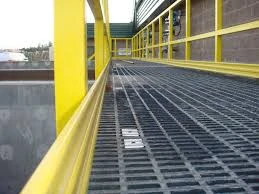
-
 Afrikaans
Afrikaans -
 Albanian
Albanian -
 Amharic
Amharic -
 Arabic
Arabic -
 Armenian
Armenian -
 Azerbaijani
Azerbaijani -
 Basque
Basque -
 Belarusian
Belarusian -
 Bengali
Bengali -
 Bosnian
Bosnian -
 Bulgarian
Bulgarian -
 Catalan
Catalan -
 Cebuano
Cebuano -
 China
China -
 China (Taiwan)
China (Taiwan) -
 Corsican
Corsican -
 Croatian
Croatian -
 Czech
Czech -
 Danish
Danish -
 Dutch
Dutch -
 English
English -
 Esperanto
Esperanto -
 Estonian
Estonian -
 Finnish
Finnish -
 French
French -
 Frisian
Frisian -
 Galician
Galician -
 Georgian
Georgian -
 German
German -
 Greek
Greek -
 Gujarati
Gujarati -
 Haitian Creole
Haitian Creole -
 hausa
hausa -
 hawaiian
hawaiian -
 Hebrew
Hebrew -
 Hindi
Hindi -
 Miao
Miao -
 Hungarian
Hungarian -
 Icelandic
Icelandic -
 igbo
igbo -
 Indonesian
Indonesian -
 irish
irish -
 Italian
Italian -
 Japanese
Japanese -
 Javanese
Javanese -
 Kannada
Kannada -
 kazakh
kazakh -
 Khmer
Khmer -
 Rwandese
Rwandese -
 Korean
Korean -
 Kurdish
Kurdish -
 Kyrgyz
Kyrgyz -
 Lao
Lao -
 Latin
Latin -
 Latvian
Latvian -
 Lithuanian
Lithuanian -
 Luxembourgish
Luxembourgish -
 Macedonian
Macedonian -
 Malgashi
Malgashi -
 Malay
Malay -
 Malayalam
Malayalam -
 Maltese
Maltese -
 Maori
Maori -
 Marathi
Marathi -
 Mongolian
Mongolian -
 Myanmar
Myanmar -
 Nepali
Nepali -
 Norwegian
Norwegian -
 Norwegian
Norwegian -
 Occitan
Occitan -
 Pashto
Pashto -
 Persian
Persian -
 Polish
Polish -
 Portuguese
Portuguese -
 Punjabi
Punjabi -
 Romanian
Romanian -
 Russian
Russian -
 Samoan
Samoan -
 Scottish Gaelic
Scottish Gaelic -
 Serbian
Serbian -
 Sesotho
Sesotho -
 Shona
Shona -
 Sindhi
Sindhi -
 Sinhala
Sinhala -
 Slovak
Slovak -
 Slovenian
Slovenian -
 Somali
Somali -
 Spanish
Spanish -
 Sundanese
Sundanese -
 Swahili
Swahili -
 Swedish
Swedish -
 Tagalog
Tagalog -
 Tajik
Tajik -
 Tamil
Tamil -
 Tatar
Tatar -
 Telugu
Telugu -
 Thai
Thai -
 Turkish
Turkish -
 Turkmen
Turkmen -
 Ukrainian
Ukrainian -
 Urdu
Urdu -
 Uighur
Uighur -
 Uzbek
Uzbek -
 Vietnamese
Vietnamese -
 Welsh
Welsh -
 Bantu
Bantu -
 Yiddish
Yiddish -
 Yoruba
Yoruba -
 Zulu
Zulu
grp storage tank
Understanding GRP Storage Tanks A Comprehensive Overview
Glass Reinforced Plastic (GRP) storage tanks have become a popular choice in various industries for their durability, corrosion resistance, and lightweight properties. As industries continue to evolve and seek efficient solutions for storage needs, GRP storage tanks have carved out a significant niche due to their practical applications and benefits.
What Are GRP Storage Tanks?
GRP storage tanks, often referred to as fiberglass tanks, are made from a composite material that includes glass fibers and a resin polymer. This combination gives them several favorable characteristics. Unlike traditional materials such as steel or concrete, GRP tanks are designed to withstand harsh environmental conditions, making them ideal for storing a variety of substances, including water, chemicals, and even waste materials.
Advantages of GRP Storage Tanks
1. Corrosion Resistance One of the foremost advantages of GRP storage tanks is their ability to resist corrosion. This property makes them particularly suitable for industries that deal with corrosive chemicals, ensuring a longer lifespan and reduced maintenance costs.
2. Lightweight Design The lightweight nature of GRP tanks allows for easier installation and transportation. Unlike steel tanks, which can be cumbersome, GRP tanks can be moved and installed with minimal effort, often requiring less heavy machinery.
3. Cost-Effectiveness Though the initial investment might be on par with or slightly higher than traditional tanks, the long-term savings associated with reduced maintenance and replacement make GRP tanks a cost-effective solution over time.
grp storage tank

4. Customization GRP tanks can be easily molded into various shapes and sizes, providing flexibility to meet specific storage needs. Whether it’s a small water tank or a large chemical storage vessel, GRP can be tailored accordingly.
5. Thermal Insulation GRP tanks provide excellent insulation properties, which helps in maintaining temperature stability for the stored contents. This is particularly important in processes where temperature-sensitive materials are involved.
6. Minimal Environmental Impact Being non-toxic and recyclable, GRP tanks contribute to environmental sustainability. Their production process is designed to minimize waste generation, making them a responsible choice for eco-conscious organizations.
Applications of GRP Storage Tanks
GRP tanks are utilized across diverse sectors, including water treatment plants, chemical manufacturing, oil and gas, agriculture, and food processing. In water treatment, they serve as cisterns and reservoirs. In the chemical industry, they are used for storing acids, alkalis, and other hazardous materials.
Conclusion
In conclusion, GRP storage tanks represent a modern solution to the challenges of storage in various industries. With their range of benefits, including corrosion resistance, lightweight design, cost-effectiveness, and customization options, they provide a versatile and reliable option for businesses seeking durable storage solutions. As industries continue to advance, the role of GRP tanks is set to become increasingly significant, signaling a shift towards innovative and sustainable storage technologies.









